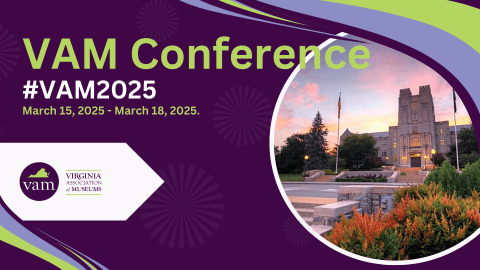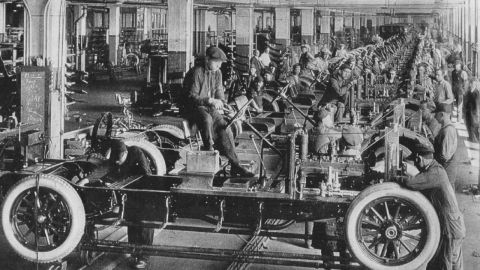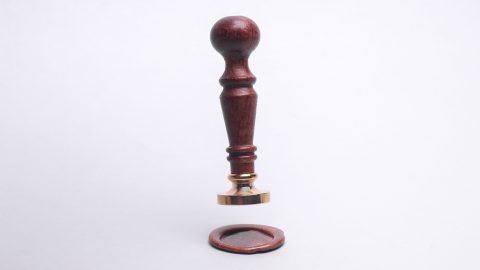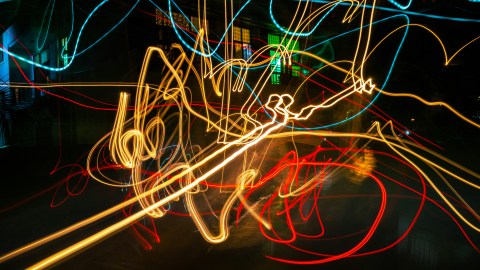(& what that says about the evolution of our field.)
A couple weeks ago, I read a post on Coexist called “Eight New Jobs People will have in 2025,” projecting openings for Digital Death Managers, Un-Schooling Counselors, Digital Detox Specialists and Microbial Balancers.
While slightly tongue in cheek, this article is built on solid trends analysis, and reflects many of the forces of change we have been tracking in CFM’s TrendsWatch report. It takes a great approach to forecasting—making potential futures specific and personal by thinking about how they will change our day-to-day lives (not to mention job prospects).
The article prompted me to look in the other direction—backwards—to chart the emergence of museum positions that didn’t exist a decade ago. Some of these may just be catchy new labels for traditional functions (is Jeff Byers, “Storyteller” at the Asian Art Museum in San Francisco, simply an interpreter in 21stcentury guise?) Some emerge from the need to wrap our collective heads around the consequences of new technologies (like the Smithsonian’s Director of Web and New Media Strategies, a position filled by the fabulous Michael Peter Edson, or Cincinnati Museum Center’s Informatics Champion, Shawn Mummert).
Many of these new positions, whether or not they are grounded in new technologies, reflect deeper changes in organizational focus and culture. When the Victoria & Albert Museum appoints Sophia George as their first Game Designer in Residence, it acknowledges that gaming has become a new literacy through which people can connect with museum content. (You can hear Sophia talking about her new job in Episode 5 of the Museopunks podcast.) When the Worcester Art Museum hires Adam Rozan as Director of Audience Engagementand the Oakland Museum of California engages Lisa Sasaki as Director of Audience and Civic Engagement, it signals a subtle but profound shift in organizational focus.
Here’s a closer look at two “21st Century museum positions,” with some observations about how they reflect deeper underlying changes in their organizations.
Thanksgiving Point Institute in Utah consists of a working farm, a natural history museum and extensive formal estate gardens. (Next spring they’ll open yet another site, the Museum of Natural Curiosity, a family/children’s museum, which you can get a peek at during the WMA conference this October.) Earlier this year Thanksgiving Point restructured, eliminating directors of the separate venues and creating roles that cut across operations. One of these new positions, Curator of Curiosity and Inquiry, is filled by Lorie Millward. Lorie explains that she is “charged with ensuring that each venue is an environment where curiosity and inquiry are fostered in meaningful ways for visitors. The Curator actively procures, develops, and evaluates experiences that promote curiosity and critical thinking. That has implications for exhibitry, programming, guest interactions, staff development, partnerships, evaluation, and daily operations.” Lorie sees this reorganization as part of a trend towards dismantling the traditional hierarchical structure of museums, in favor of assigning strategic realms of responsibility to individuals or teams. (Which certainly describes what director Lori Fogarty has done with the Oakland Museum of California’s new org chart.)
My second mini-interview was with Emily Graslie, whose title—Chief Curiosity Officer at the Field Museum of Natural History—was the second inspiration for this post. Emily’s journey to the Field Museum illustrates what I think is the best strategy for landing a job in the museum of the future—get out there and do real work (even before anyone is willing to pay you) and trust that the resulting attention will open doors. Or in this case, create a door, since the position the Field Museum offered her didn’t already exist. Emily caught the attention of the Field Museum with The Brain Scoop, a video series she made while volunteering at the University of Montana Zoological Museum. The videos take an irreverent and engaging look at work behind the scenes in a natural history museum, like gutting a wolf and explaining basic such as the difference between horns and antlers (the first Brain Scoop video I stumbled upon, which hooked me on Emily’s work):
Emily explains that she is basically a communications specialist, bringing new skills to a team comprised of staff in marketing, PR and IT (including a social media strategist). “As Chief Curiosity Correspondent my primary goal is to continue making The Brain Scoop with my producer, Michael Aranda… Our focus is creating online, free and easily accessible educational content that reflects the ongoing research and behind-the-scenes work of natural history museums. I’m also responsible for designing and implementing interactive floor programs, conducting tours to interest groups, and otherwise creating outreach opportunities in order to engage our audience.”
Here’s Emily bringing the Brain Scoop vibe to her new digs (and introducing viewers to director Richard Lariviere’s cool hat):
Of course, museums don’t enjoy unlimited growth. New positions often supplant, rather than supplementing, traditional roles. Sometimes this reflects changes in technology (e.g., 3-D printing specialists as successors to model makers who worked marvels in glass, or wax). But sometimes it reflects the economics and business model of museums. As noted in an article in the Chicago Tribune, the Field Museum created the position of “Chief Curiosity Correspondent” at the same time that it is downsizing its staff in collections and research. Chris Norris argued on this blog (in the post No Future) that when faced with constricting resources, museums should double down on collecting, preserving collections, and creating new knowledge rather than “outreach.” But (my commentary, now) we, as a field, have done a lousy job over the last century telling the public about the hidden things we do, such as collections and research, much less cultivating a consensus in society that these functions are vital, and worthy of public support. It’s a chicken/egg dilemma—without collections & research, what is our core value to society? If we don’t put resources into disseminating that content in compelling & addictive ways, why should anyone support our work? Or, in the context of this post, in the current economic climate which comes first, the curator or the vlogger?
Me, I sadly observe that we’ve given the “curator first” approach a good run for over a century, and in far too many cases it hasn’t resulted in sufficient levels of love and support. Maybe Emily and Lorie (and Jeff, Michael, Sophia, Adam and Lisa) are the key to a future in which museums can afford to sustain collecting, preserving and creating knowledge by pulling back the curtain and ensuring that the public shares our boundless enthusiasm for museums.
I will use future posts to interview Adam, Emily and others in more depth about their 21st century jobs. Please us the comments section, below, to nominate other people who are figuring out how to fill museum roles that have only recently emerged.
Elizabeth Merritt










I love this post from beginning almost to the end. I we can stop the little digs at curators and any other "old" members of the museum professions. The field is big enough for all of us and needs all, too. Old fashioned curators certainly did and still do bring the love.
We agree, cute job titles and a pixie girl presenter is our future. Especially when she says many of the same things those old-fashioned curators have said all along, just in a hipster way.
But we do have a few questions for you: are these new jobs the harbingers of field-wide changes or are they avant-garde one-offs? And has there been any study that shows these jobs are effective in gaining their organizations money or visitation?
We ask because we believe that effectiveness should should be our goal and because if there's one thing we've learned from reading the Paleofuture blog, it's that futurists get things wrong a lot.
Just curious.
T.H. Gray, Director-Curator
American Hysterical Society
Thanks for your comments, Mary and T.H.
Mary–I don't mean this as a dig at curators, I meant it as an observation. There is certainly a change in attitudes (within and outside museums) to curators and curatorial authority. There is a growing popular perception that "anyone can curate." (See the appropriation of the verb, and resulting storm of indignation from some within the field). This post documents signals of changing perceptions and priorities within museums.
I was thinking last night about how to find museums might have really, really old staff lists we could compare to their present org chart, to quantify these changes! What percentage of staff are curators, now, compared to 100 years ago? I suspect it is smaller.
T.H–I think it is dismissive(and disrespectful) to call Emily or her peers "pixie girls." Just as many traditional curators are trained in how to communicate effectively with academic audiences, she is skilled at popular communication. How do we know she is effective at reaching people? Check the stats on the Brain Scoop Channel–over 140 thousand subscribers. The "Welcome to the Field Museum" video posted 2 weeks ago has had over 48 thousand views, and over 1300 people cared enough to comment (however briefly).
Scientists are often stigmatized by their peers for being good at popularizing their work, and the training the go through to get a PhD doesn't include, or explicitly reward, this skill. Not to say there aren't traditional curators who are great communicators (Paola Antonelli at MOMA for example). But it should be no surprise that the traditional system of training and selecting curators doesn't always result in effective public advocates for the work of museums.
As to whether this is a fad or a trend, only time will tell. Futurists don't try to predict the future, they help people realize the many plausible ways the future may play out. As futurist Jamais Cascio said,“the futures you come up with will almost certainly be wrong—the goal is to be wrong in a way that offers insights into present choices.”
Thanks for the comments, and keep 'em coming, people!
Emily makes a great curiosity officer because she is curious. In particular she is curious about the things that curators are doing with research and collections. She is there to promote research and collections and does an amazing job at it precisely because she has actually participated in those activities. The Brain Scoop is a great vehicle for promoting museums because it is bottom-up, and grounded in the fundamental things that museums do, collections and research. Even the name of Emily's segment comes from a very particular practice in preparing vertebrate specimens that your average marketing staff with no experience in collections would never had come up with. Emily is exactly what museum's need because she is passionate about museums as museums and not museums as businesses.
Curators and collections managers are definitely at the core of museums, but so are educators. How many institutions do you know that aren't actively collecting because of space issues? And how many don't have full-time educators?
Full disclosure: I'm an educator and I also work with digitization and social media outreach. So I'm a tad bit biased, but if future generations don't care or even know anything about museums and what they do and why they're important, we aren't going to have the funds to maintain existing collections, much less collect for the future.
My number one goal with every visitor is to make sure they have a positive experience. Even if they don't actually "learn" anything, if they have a good time and have good memories of the museum, the next time we need to fundraise or the next time Congress is looking to cut federal funding for historic sites and parks and IMLS, they might do something about it.
If they had a bad experience? Forget it. You can collect all you want, but they'll tell their friends and family and even strangers on the street not to go to "that" museum and they might not even go to other museums, lumping them all together as universally "rude" or "boring" or "elitist."
Curators and educators (or even
"Chief Curiosity Officers") have to work TOGETHER to make sure the visitor experience is both enriching and fun while maintaining historical accuracy and best practices. Alas, that rarely happens. In my opinion, educators tend to be marginalized because we deal with elementary aged children so much and thus aren't viewed as capable of having input on interpretation for "grown-ups" despite the fact that curators aren't always the best at writing accessible labels. Collaboration on both sides is necessary and that is what should be emphasized.
That being said, I'm happy to see so many "new" jobs that emphasize visitor engagement.
Now..when these jobs make it to the west coast…or more of them open up. It's killing me, as a museumist with a background in digital open heritage and curatorial practice and I get my application rejected repeatedly due to fear of being shaken out of tradition.
Ah…maybe someday I will be full time in a museum.
This museumist…can…..only…dream 🙂
I just followed a link to your blog. Very interesting. And thank goodness! Museums are boring. I say this as one who is constantly curious and always interested in just about anything. I love the little local, not boring, museums we used to find in the rural American West. They usually showed their items in a contextual format, rather than in cases, and were mostly showing artifacts of their localities.
Big institutional museums, however, lure one with great marketing, then put a book that is important to what is being presented in a case with a tag, so one can read why the book is important, but not experience the book's importance. Similarly, the more interesting exhibits, are arranged behind glass. There's more to seen than the poor, static books, but the exhibits are still walled away. It's like going to a mausoleum of culture. And all the pieces that one really wanted to see are still tucked away in the basement. When one gets a white glove tour of the unedited collection, it can be exciting and enlightening (given that to get that tour one must already have a certain amount of knowledge), but experientially, it's visiting a file room.
People don't read. I read, but I know better than to try to make other people read. It's sad. People can read, but they want to read gossip. Going to a museum where you have to read an epitaph then view the preserved body in its glass coffin is a drag, but if you don't even read the card, it's also meaningless.
Thank goodness for these new audience development pros! Whether they're designing better experiences for visitors, or making online videos for the community at large, whether they're making apps that help one understand the exhibits whether or not one is present in the museum, or finding new ways for docents and interpreters to engage visitors, they are, above all else, de-boring-ifying the museum. Even if some museum staffers consider their research the "important" work of the museum, it's vital that they remember that they won't get paid (barring some freakishly generous endowment) without the enthusiasm of the public for what they do. Scholarship is vital to society, but just like the academy, the museum must teach in order to be relevant and survive.
Greetings from the Asian Art Museum! Very interesting post about an ongoing discussion about the relevance of museums. For clarity, I did want to explain the "Storyteller" title at the Asian Art Museum. This is a volunteer group which tells Asian myths and folktales near related art works in our galleries for audiences comprised mostly of children pre-K through middle school. Our storytellers are interpreting works of art, but not in the sense that the blogger implies.
Thank you for the clarification about the Storytellers program at the Asian Museum of Art, Deborah.